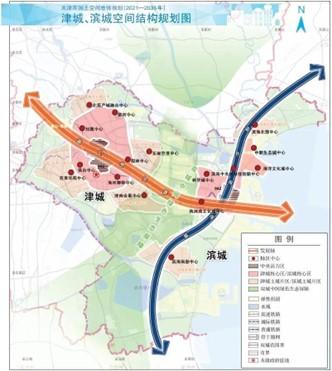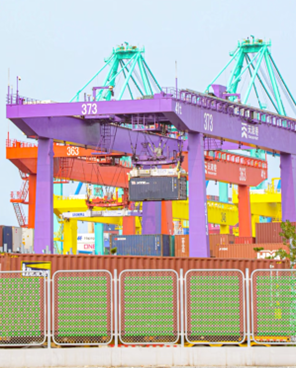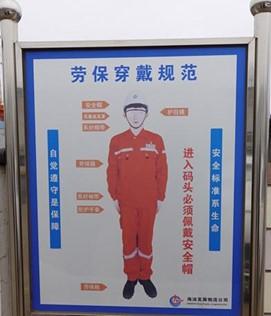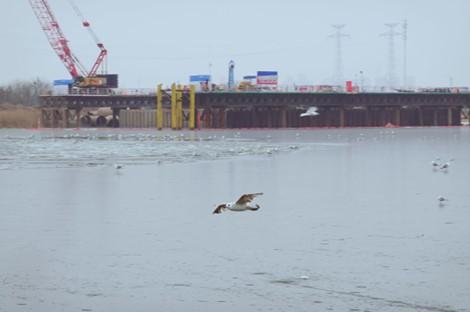Yuanpeng Hou
Tianjin Port and the Impact of the Oil Industry
Tianjin is an important port city in the northeastern part of the North China Plain, adjacent to the Bohai Sea. Its port has 132 berths, including 29 container berths. In 2023, Tianjin Port achieved a container throughput of 22.19 million TEUs and a cargo throughput of 459 million tons, with shipping routes covering over 800 ports worldwide (Tianjin Port (Group) Co., Ltd., 2024). Additionally, the Tonghui River and Chaobai River have historically been vital shipping channels for ensuring grain supply to Beijing. The strategic location of Tianjin Port is crucial for energy supply and transportation in North China, leading Tianjin to prioritize the development of its port economy under the impetus of industrial growth (Tianjin Municipal Bureau of Statistics, 2023).
China's major crude oil receiving ports are mainly distributed in the Bohai Rim region, the Yangtze River Delta region, and the Pearl River Delta region, with Dalian, Tianjin, and Qingdao as the main ports in the Bohai Rim region. Oil transportation has a significant impact on the economic development of Tianjin Port. As one of China's key crude oil receiving ports, Tianjin Port handled a throughput of 118 million tons in the liquid bulk cargo sector in 2023, representing a year-on-year increase of 12.5%. Its oil products accounted for 86.4 million tons, up 12.3% from the previous year. The growth in oil transportation has driven an increase in port throughput, thereby promoting the economic development of the port. To meet the demands of oil transportation, Tianjin Port continuously introduces advanced oil loading and unloading equipment and technology, including 12 oil product berths capable of accommodating large vessels.
The development of container transportation has driven technological innovation and upgrades at Tianjin Port. The port boasts 23 large, deep-water specialized container loading and unloading berths, capable of accommodating the world's largest container vessels. In January 2023, Tianjin Port Group launched the world's first fully IoT-enabled container terminal, marking a significant step towards becoming a "digital twin port." These advanced technologies and facilities have improved the efficiency and intelligence of container transportation, contributing to the port's economic growth (Ministry of Transport of the People's Republic of China, 2024).
Global Challenges and Local Stakeholder Conflicts
Alongside rapid development, Tianjin Port faces a range of social, economic, and environmental challenges. Global economic fluctuations, the rise of trade protectionism, and uncertainties in international market demand have increased the risks associated with port operations. Additionally, the inherent characteristics of port operations contribute to environmental pressures, including noise, dust, and ship emissions.
When addressing these challenges, conflicts among various stakeholders have become increasingly evident. Government departments focus on sustainable development and social equity, while port operating companies seek to balance economic benefits with social responsibilities. Logistics companies desire efficient and low-cost services, but this may lead to safety hazards. Meanwhile, residents benefit from job opportunities brought by the port economy but face issues such as environmental pollution and traffic congestion.
Government departments, including both the central government and local government, prioritize sustainable development, social equity, and environmental protection in their decision-making processes. The central government, represented by the State Council and its ministries such as the Ministry of Transport and the Ministry of Ecology and Environment, formulates national policies and provides guidance for port development and environmental protection. Meanwhile, the local government of Tianjin, including the Tianjin Binhai New Area government and the Tianjin Port Free Trade Zone Administrative Committee, plays a crucial role in overseeing local operations.
Tianjin Port Group, as a port operating company directly involved in local operations, not only seeks economic benefits but also embraces its social responsibility. In this context, both the port operating company and local government departments can be viewed as stakeholders with shared interests in promoting sustainable practices and social equity.
Logistics companies seek efficient and low-cost services from port operators to reduce their operational costs and enhance competitiveness. These include management costs, warehouse rental costs, personnel costs, and transportation costs. However, if logistics companies cut management and warehouse rental costs, it may lead to serious accidents, such as the 8.12 explosion; if they reduce personnel costs, it could result in strikes and protests (Global Times, 2025).
On the other hand, while residents benefit from the job opportunities brought by the port economy, they also face issues such as noise, environmental pollution, and the impact of heavy truck transportation on their daily lives, leading to conflicts of interest with port operators and logistics companies.
Measures Taken by Tianjin Municipality
To address the challenges faced by Tianjin Port, the government has implemented a series of policies aimed at guiding sustainable development. This includes establishing a regulatory framework that emphasizes corporate responsibility and encourages port operating companies to adopt the best practices in safety management, environmental protection, and community engagement. By promoting collaboration between the government and port operators, the goal is to create a balanced development approach that considers the interests of all stakeholders (Thoresen, 2020). The most renowned policies include the "Twin-Port, Twin-City" policy, the green smart port development policy, and the safety production policy.
From a macro perspective of urban planning, the government’s "Twin-Port, Twin-City" policy focuses on integrating the port economy of Tianjin and Binhai with urban development. This initiative fosters mutual support between the port, industry, and city, creating a diverse range of business formats and enhancing industry adaptability, thereby transforming "cargo corridors" into "economic corridors" (Tianjin Municipal Transportation Commission, 2022).

As shown in Figure 1, the government has planned two main transportation directions throughout Tianjin: a north-south railway network that connects Northeast China with the North China Plain and an east-west transportation network that ensures logistics between the port and the inland areas.
In terms of the twin cities, the urban area of Tianjin, as the old city, plays a vital role in maintaining the city's residential and cultural attributes, ensuring that residents' lives are not disrupted by port activities and transportation. Meanwhile, the Binhai New Area, serving as the port, guarantees the attributes necessary for industrial development. A green ecological corridor acts as a buffer zone between the two areas, connected by railways and light rail, allowing them to support each other without interference.
From the perspective of terminal construction, Tianjin Port achieves efficient, low-carbon, and intelligent operation by integrating advanced technology and management. The ports utilize clean energy to reduce reliance on fossil fuels and lower carbon emissions, employing automated equipment and intelligent control systems to improve efficiency and safety. By leveraging big data and cloud computing, they enhance management practices, making decision-making more scientific and timelier while providing convenient and efficient services (Liu, 2023).
A notable example is the "Colorful Terminal," the second container terminal at Tianjin Port, renowned for its colorful shore bridges and containers. As the world's first "smart zero-carbon" terminal, it achieves fully automated container operations, with all equipment powered by electricity, ensuring zero carbon emissions. Utilizing 5G connectivity and big data centers, the Colorful Terminal significantly improves operational efficiency, completing over 1 million TEUs in the first half of 2023, with a 100% ship docking rate (Tencent News, 2024).

From a micro perspective of terminal operations, safety production is a top priority for Tianjin Port. Due to the inherent risks associated with the complex operations involved in cargo handling and transportation, it is crucial to promote a safety culture and provide technical training and operational guidelines to enhance operational safety. Port operators are encouraged to implement efficient safety protocols that do not hinder productivity, aiming to minimize accidents while maintaining economic competitiveness. As shown in Figure 3, there are safety measures and wearing regulations that must be followed before entering the work area.

Conclusion
In Binhai, the goal is to build a green, smart, and modern port to meet the demands of future development while minimizing environmental impact. By implementing green buffer zones, the aim is to reduce environmental issues affecting residents and improve their quality of life.
In Tianjin, efforts will focus on enhancing public comfort in urban living, developing tourism, service, and cultural industries to increase residents' sense of happiness, thereby attracting and retaining high-end talent. This comprehensive improvement initiative not only aligns with the needs of economic development but also considers social and environmental sustainability, truly achieving a balance of interests and a win-win situation for all parties involved.

Looking ahead, Tianjin Port needs to find a balance between economic development and environmental protection. By further promoting the construction of green smart ports, Tianjin Port can enhance operational efficiency while reducing environmental impact. Only in this way can Tianjin Port maintain its market competitiveness in the face of fierce regional competition and achieve sustainable development.
Acknowledgment
This blog post has been written in the context of discussions in the LDE PortCityFutures research community. It reflects the evolving thoughts of the authors and expresses the discussions between researchers on the socio-economic, spatial, and cultural questions surrounding port city relationships. This blog was edited by the PortCityFutures editorial team: Wenjun Feng. Special thanks go to the online course (Re)Imagining Port Cities: Understanding Space, Society and Culture, which runs on the EdX platform.
Reference:
Thoresen, C. A. (2020). Port Designer's Handbook (4th ed.). Tianjin University Press
Tianjin Port (Group) Co., Ltd. (2024). Tianjin Port (Group) Co., Ltd. 2023 Annual Report. https://www.tianjin-port.com/UploadFiles/2024-04/admin/202404120016182160.pdf.
Tianjin Municipal Bureau of Statistics. (2023, March 17). Statistical Communiqué of Tianjin Municipality on the National Economic and Social Development in 2022. Tianjin Municipal Bureau of Statistics. https://stats.tj.gov.cn/tjsj_52032/tjgb/202303/t20230317_6142668.html
Ministry of Transport of the People's Republic of China. (2024, July 9). Port-Industry-City Integration: A New Driver for Tianjin's Development. China Transport News. https://www.mot.gov.cn/jiaotongyaowen/202407/t20240709_4144143.html
Global Times. (2025). Investigation report on the Tianjin port ”8·12” major fire and explosion accident . https://www.huanqiu.com/article/9CaKrnJTIXw
Tencent News. (2024). Youthful chapter | full process automation: Exploring the world’s first ”smart zero-carbon” terminal in Tianjin. https://news.qq.com/rain/a/20240920A0850900
Tianjin Municipal Transportation Commission. (2022, September 30). Interpretation of the “14th Five-Year Plan” for Port Development in Tianjin. https://jtys.tj.gov.cn/ZWGK6002/ZCJD/202209/t20220930_6001204.html
Liu, S. (2023, July 12). Emphasizing Four Synergies to Play a Leading Role in Green and Low-Carbon Port Development. Ministry of Transport of the People’s Republic of China. https://www.mot.gov.cn/jiaotongyaowen/202307/t20230712_3863785.html
